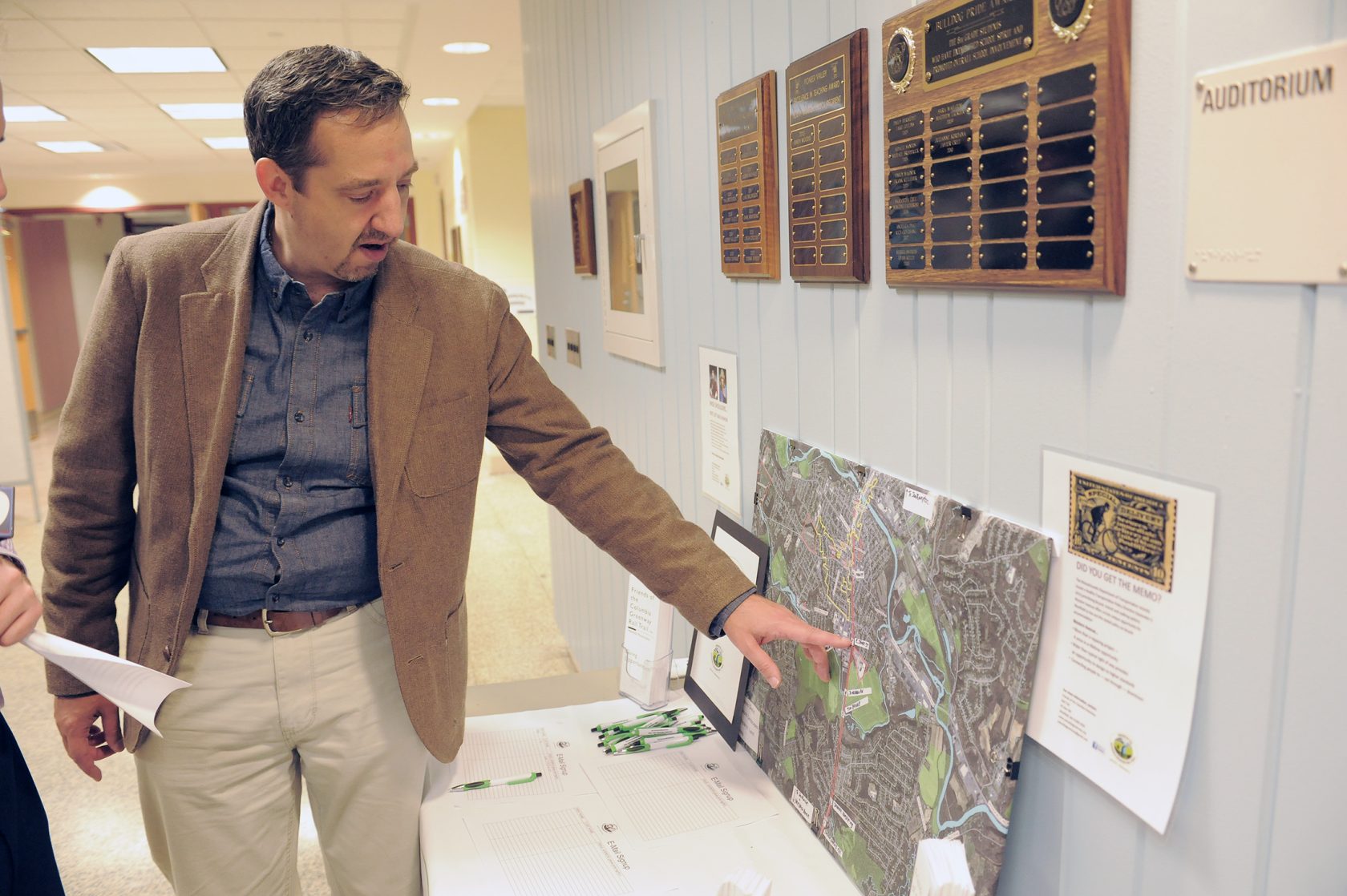WESTFIELD – On Thursday night, the Westfield City Council accepted a $2 million Gateway Communities grant to fund an extension of the Columbia Greenway Rail Trail. That construction is set to begin next spring, and other direct economic benefits are difficult to quantify at this time, but rail trail supporters and bike path advocates say it would be a win for the city, bringing in new traffic via an alternative mode of transportation.
Jeffrey LaValley, chairman of the Friends of the Columbia Greenway Rail Trail, said that the trail – which starts on Yale University’s campus in New Haven, Connecticut – will attract people to the city since it is the northern terminus of the trail.
“It’s significant, because on any given weekend, folks will be riding up,” he said. “What will they be looking for? Places to eat and things to do off the trail and Westfield has a lot of amenities – Stanley Park, the Amelia Park campus, lots of great restaurants…”
“It’s going to have a huge economic impact,” LaValley said.
“Part of it has to do with awareness, that there is now this northern terminus (in Westfield),” he said. “We, the board of directors, we meet people on the trail on a constant basis who have ridden up from Farmington or Simsbury who didn’t realize the trail went up this far.”
LaValley said that he has been hearing rave reviews from trail patrons, but that continued outreach to let the outside world know that the trail is ready for use is part of the mission of the Friends of the Rail Trail.
“This (past) Saturday, we will be attending a trail summit meeting in Simsbury to talk on that subject,” he said. “What can the communities along the Farmington Valley Trail in Connecticut and the Columbia Greenway in Massachusetts do to collaborate and promote the trail to benefit all of our communities?”
Other proponents of the rail trail’s expansion are optimistic about the effects it will have on the city.
“It is going to transform Westfield. It will be the biggest thing that has ever occurred in Westfield in 50 years, there is no doubt in my mind,” said Craig Della Penna, a Northampton-based realtor who was a former legislative aide working on rail trail initiatives. “I’m just stunned it has taken so long in Westfield.”
Della Penna specializes in selling homes situated near rail trails and bike paths and says western New England is a gold mine for these sorts of projects.
“If you draw a 100-mile radius of where I am, there are over 200 projects underway,” he said. “What is being built here is the densest network in North America.”
The presence of a throughway will also make the city a more attractive place for prospective homeowners, according to Della Penna, but it is the increase in potential bicycle and foot traffic downtown where he said the impact will be seen most.
“One of the interesting things about Westfield is that the trail goes right through the heart of downtown and that is really going to feed (the downtown),” he said. “The indicator species of life – let’s say, in a coal mine – are the canaries, and when the canaries aren’t there, you know it is time to get out.”
“The indicator species of life in a community are the number of bicycles and pedestrians you see. If you don’t see those uses as common and prevalent, it is because they were exed out by transportation decisions years earlier,” Della Penna said. “The way to resurrect downtown Westfield is to make it more bicycle- and pedestrian-friendly, which will slow traffic down and in turn make the storefronts more attractive and lively.”
Westfield Community Development Director Peter Miller has reviewed studies from rail trails around the region and nation and believes a big spike in economic activity could be on the horizon for Westfield once this next phase of the rail trail is completed.
“The Farmington Valley Trail in Suffield, Connecticut, did a lot of traffic counts last year and they counted 117,000 users on the Suffield portion of the trail,” he said. “That’s the closest portion of the trail to Westfield and it gives us a good indicator of the number of users that we could potentially experience.”
“Once we do hit the downtown with the next phase, the business community is well within reach and I think it is fair to say there could be a significant economic impact,” Miller said, and cited numbers from a recently completed study in Ohio.
“They said that the average cyclist that stops while using the trail spends an average of $18,” he said. “If we were to get a good portion of people to stop – and since the trail will be terminating here, I think Westfield becomes a logical point for people to stop – I think we could experience a good amount of economic spin-off.”
Miller said that the city would be willing to look into predicting the economic benefits of the trail further.
“I think that a number of our downtown merchants should hopefully see a benefit from it, whether it is the coffee shops or lunch stops. I think it is something that is promising,” said Miller. “Anytime you can bring that number of people to a community, it can only help.”


